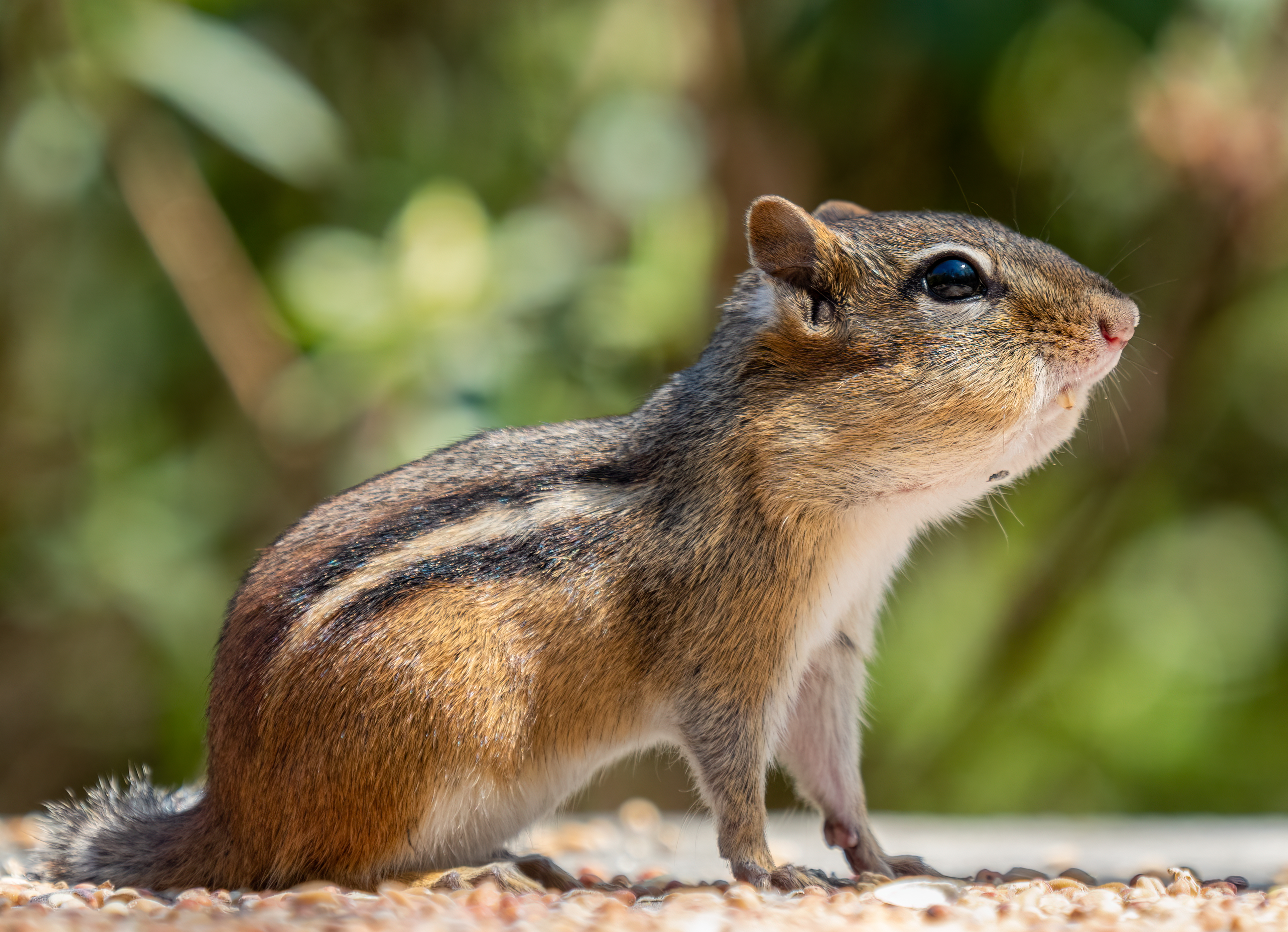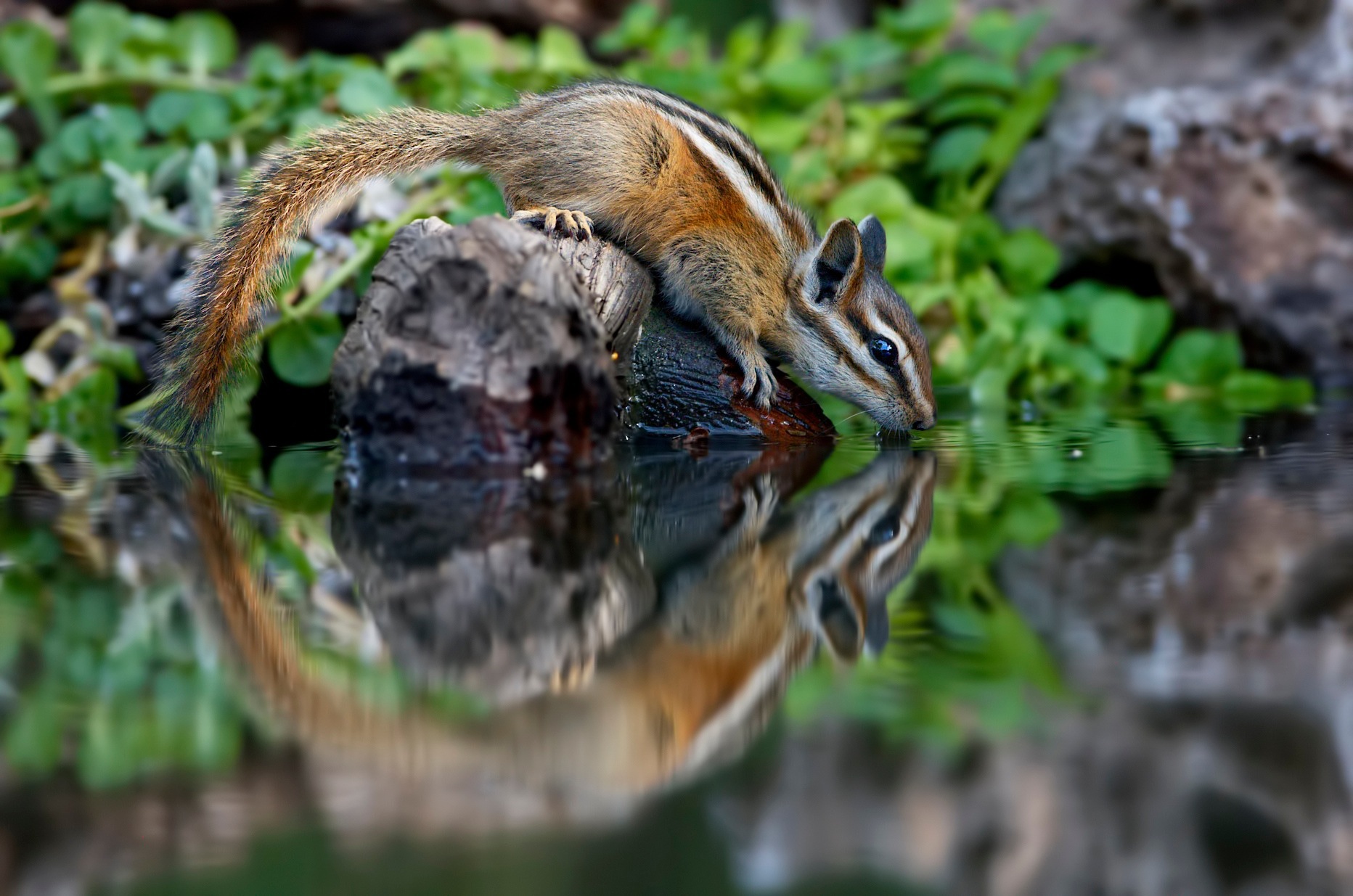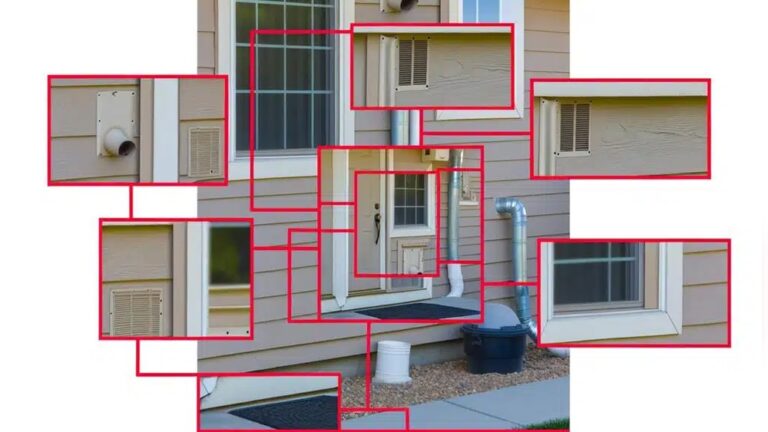Where Do Chipmunks Live: Discover Their Secret Habitats Today
Have you ever spotted a tiny chipmunk darting through your backyard and wondered, “Where do chipmunks live?” These small, striped creatures are more than just cute visitors—they have fascinating homes and habits that might surprise you. If you want to understand where chipmunks make their nests and why they choose certain places, you’re in the right spot.
Keep reading, and you’ll discover everything about chipmunk habitats that will change the way you see these little animals around you.

Credit: en.wikipedia.org
Chipmunk Species And Their Homes
Chipmunks are small, striped rodents known for their lively behavior. Different species live in various places. Their homes depend on the species and the environment they prefer. Understanding these homes helps us learn more about chipmunks and their way of life.
Each chipmunk species has unique habits and living spaces. Some like forests, others prefer rocky areas. Their choice of home affects how they find food and stay safe from predators.
Common Chipmunk Varieties
The Eastern chipmunk is the most well-known species. It has reddish-brown fur with five dark stripes on its back. This chipmunk lives mostly in eastern North America.
The Least chipmunk is smaller and found in western parts of the continent. It has similar stripes but is more slender. Another type is the Siberian chipmunk, native to Asia, with a longer tail and softer fur.
Habitat Preferences By Species
Eastern chipmunks prefer deciduous forests with plenty of bushes and trees. They dig burrows underground for shelter and food storage. These burrows have many tunnels and chambers.
Least chipmunks live in open woods, grasslands, and rocky places. They build shallow burrows or use natural crevices for homes. This helps them avoid predators and harsh weather.
Siberian chipmunks favor mixed forests and gardens. They often nest in tree hollows or dense shrubs. Their homes keep them hidden and safe during cold seasons.
Natural Habitats Of Chipmunks
Chipmunks live in many places across North America. They choose homes where food and shelter are easy to find. Their natural habitats vary from dense forests to city parks. Each environment offers unique features that help chipmunks survive and thrive.
Forests And Woodlands
Forests are the most common homes for chipmunks. They love areas with many trees and bushes. The thick leaves and fallen logs provide cover from predators. Forest floors also have nuts, seeds, and berries, perfect for chipmunks’ diets. They dig burrows under roots or logs to stay safe.
Grasslands And Meadows
Chipmunks can live in open grasslands and meadows too. These areas have tall grasses and wildflowers. Chipmunks build tunnels underground to hide from birds and other threats. Grasses offer seeds and insects, which chipmunks eat daily. These open spaces give good sunlight and warmth.
Urban And Suburban Areas
Many chipmunks adapt well to urban and suburban life. They live in parks, gardens, and yards. These places have bird feeders, plants, and safe spots for burrows. Chipmunks take advantage of human food scraps as extra snacks. They stay close to green spaces for protection and food.
Burrow Designs And Locations
Chipmunks are small creatures that live in burrows underground. Their burrows serve many important functions. These homes protect them from predators and harsh weather. Chipmunks also store food inside their burrows. The design and location of these burrows vary depending on the chipmunk’s needs and surroundings.
Understanding their burrow designs helps us see how chipmunks survive. These burrows are not simple holes but carefully made tunnels and chambers. Each part of the burrow has a special role. The location is chosen with care for safety and food access.
Burrow Structure And Purpose
Chipmunk burrows have several tunnels and chambers. These tunnels lead to different rooms underground. One chamber stores food like nuts and seeds. Another chamber is a sleeping nest lined with soft materials. The tunnels have many entrances and exits. This helps chipmunks escape from predators quickly. The burrow keeps chipmunks warm during cold weather. It also stays cool in the summer months. The structure is both a home and a safe place.
Preferred Burrow Sites
Chipmunks prefer dry and hidden places for burrows. They often choose areas near trees or shrubs. Roots help hold the soil together. Chipmunks like to dig in loose soil for easy digging. They avoid very wet or flooded areas. Burrows are often found near food sources. This saves energy when collecting food. Chipmunks also use natural covers like fallen logs. Such places give extra protection from animals and weather.
Seasonal Habitat Changes
Chipmunks change their living spots with the seasons. Their habitats shift to meet their needs for food and safety. These small animals adapt well to winter cold and summer warmth. Understanding their seasonal habits helps us see their survival skills.
Winter Behavior And Shelter
In winter, chipmunks spend most time underground. They dig burrows deep to stay warm and safe. These burrows have many tunnels and chambers for food storage. Chipmunks collect nuts and seeds in the fall. They use these supplies during cold months. They do not hibernate but sleep in short bursts. This helps them conserve energy and survive the cold.
Spring And Summer Activities
Spring brings more activity for chipmunks. They leave their burrows to find food and mates. They eat insects, fruits, and fresh plants. Summer is busy with raising young chipmunks. They build nests inside burrows or tree holes. Chipmunks stay active, gathering food for winter. Their habitat expands to forests, gardens, and parks.
Environmental Factors Impacting Habitats
Chipmunks live in many places, but their habitats depend on the environment. Different factors affect where chipmunks can thrive. Weather, temperature, and human changes all play a role. These elements shape the homes chipmunks build and the food they find.
Climate Influence
Chipmunks prefer areas with mild climates. Cold winters force them to store food and find shelter. Warm summers help them gather nuts and seeds easily. Rainfall affects the plants and insects chipmunks eat. Too much rain or drought can harm their food supply. Seasonal changes guide their behavior and movements.
Human Activity Effects
Humans change chipmunk habitats by building cities and roads. This reduces forest space and natural shelters. Some chipmunks adapt to parks and gardens. Others move away from noisy, busy areas. Pollution and waste can also harm their health. Careful land use helps protect chipmunk homes and food sources.

Credit: msodanoillustration.com
Spotting Chipmunks In The Wild
Chipmunks are small, fast, and curious creatures. They live in many places, from forests to parks. Watching them can be fun and rewarding. You need to know where and when to find them. Also, learn how to spot signs they leave behind. This helps you see chipmunks without disturbing them.
Best Times And Places To Observe
Chipmunks are most active during the day. Early morning and late afternoon are perfect times. They like warm weather and calm days. Look near trees, bushes, and rocky areas. Gardens and woodlands are also great spots. They often stay close to their burrows. Quiet places with lots of plants attract them.
Signs Of Chipmunk Presence
Look for small holes in the ground. These are entrances to chipmunk homes. You may see tiny piles of dirt nearby. Chipmunks leave scratch marks on tree bark. Listen for soft chirping sounds. You might find scattered seeds or nuts. These signs show chipmunks are nearby. Watch carefully and you may spot them soon.

Credit: blog.nwf.org
How Smart Pets Lover Can Help You with Where Do Chipmunks Live
Practical Learning from Chipmunks’ Natural Habitats
Understanding where chipmunks live offers more than just interesting facts—it opens the door to hands-on learning about wildlife and ecosystem dynamics. Observing their burrow designs and seasonal habitat changes can teach us how animals adapt to environmental factors, a valuable lesson for any nature enthusiast or pet lover. For example, spotting chipmunks in the wild near wooded areas or garden edges provides insights into their behavior and the importance of preserving natural habitats.
As part of nurturing a deeper connection with animals, like the way we care for dogs, cats, or birds, it’s rewarding to study chipmunks’ homes with respect and curiosity. This approach aligns with the mission of Smart Pets Lover—to help pet parents and animal lovers feel informed and connected. If you want to explore more about chipmunks or related wildlife, consider reaching out to local wildlife centers or naturalist groups who can offer guidance and resources for responsible observation.
Remember, every encounter with nature is a chance to learn and grow—where every wag, purr, and chirp tells a story worth hearing.
Frequently Asked Questions
Where Do Chipmunks Build Their Homes?
Chipmunks build homes in burrows underground. They prefer wooded areas, gardens, and parks with plenty of cover. Their burrows have tunnels and chambers for nesting and food storage.
What Kind Of Habitat Do Chipmunks Prefer?
Chipmunks prefer deciduous forests with dense underbrush. They thrive in areas with ample food, shelter, and protection from predators. Gardens and suburban areas with shrubs also attract chipmunks.
How Do Chipmunks Adapt To Urban Environments?
Chipmunks adapt by nesting in gardens, parks, and yards. They use human structures for shelter and find food in bird feeders. Their burrowing habits help them survive in urban settings.
Do Chipmunks Live Alone Or In Groups?
Chipmunks are mostly solitary animals. They maintain individual burrows and territories. Interaction mainly occurs during mating season or when raising young.
Conclusion
Chipmunks live in many places across North America. They like forests, parks, and gardens. These small animals build nests underground or in tree holes. They stay close to food and shelter. You can often see them gathering nuts and seeds.
Knowing where chipmunks live helps us understand nature better. Their homes show how they survive and stay safe. Watching chipmunks can be fun and teach us about wildlife. They play an important role in their habitats. Respecting their space keeps both chipmunks and people happy.






